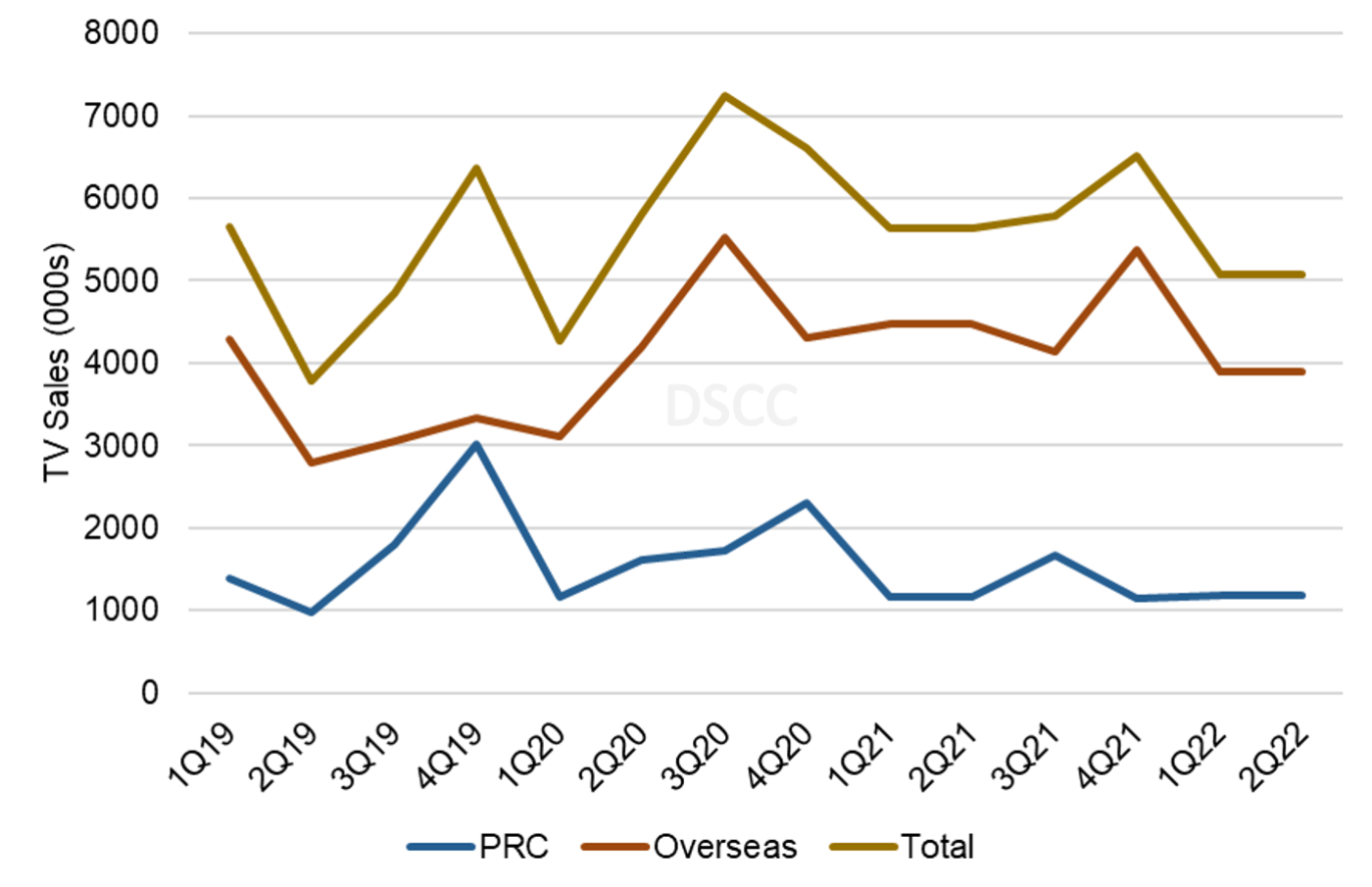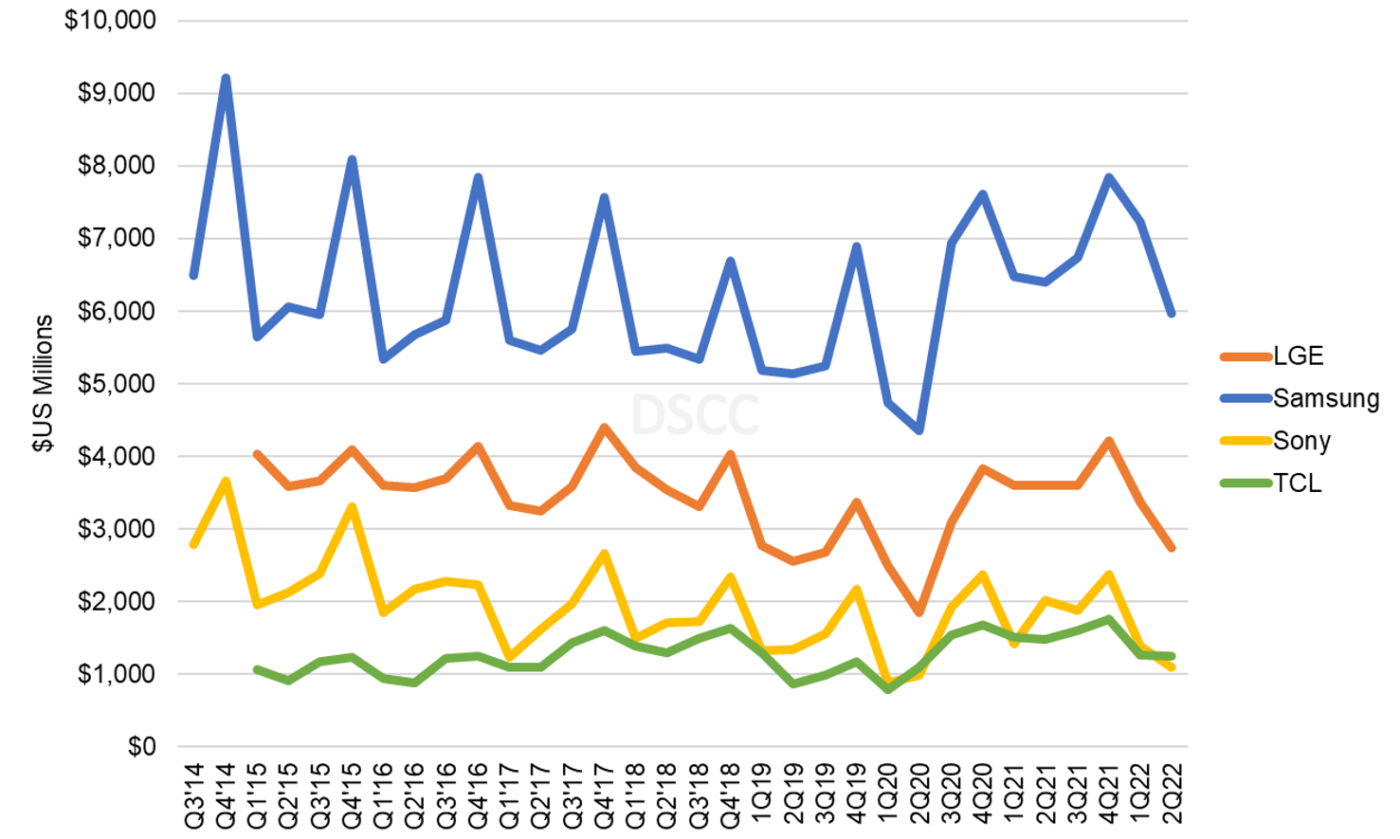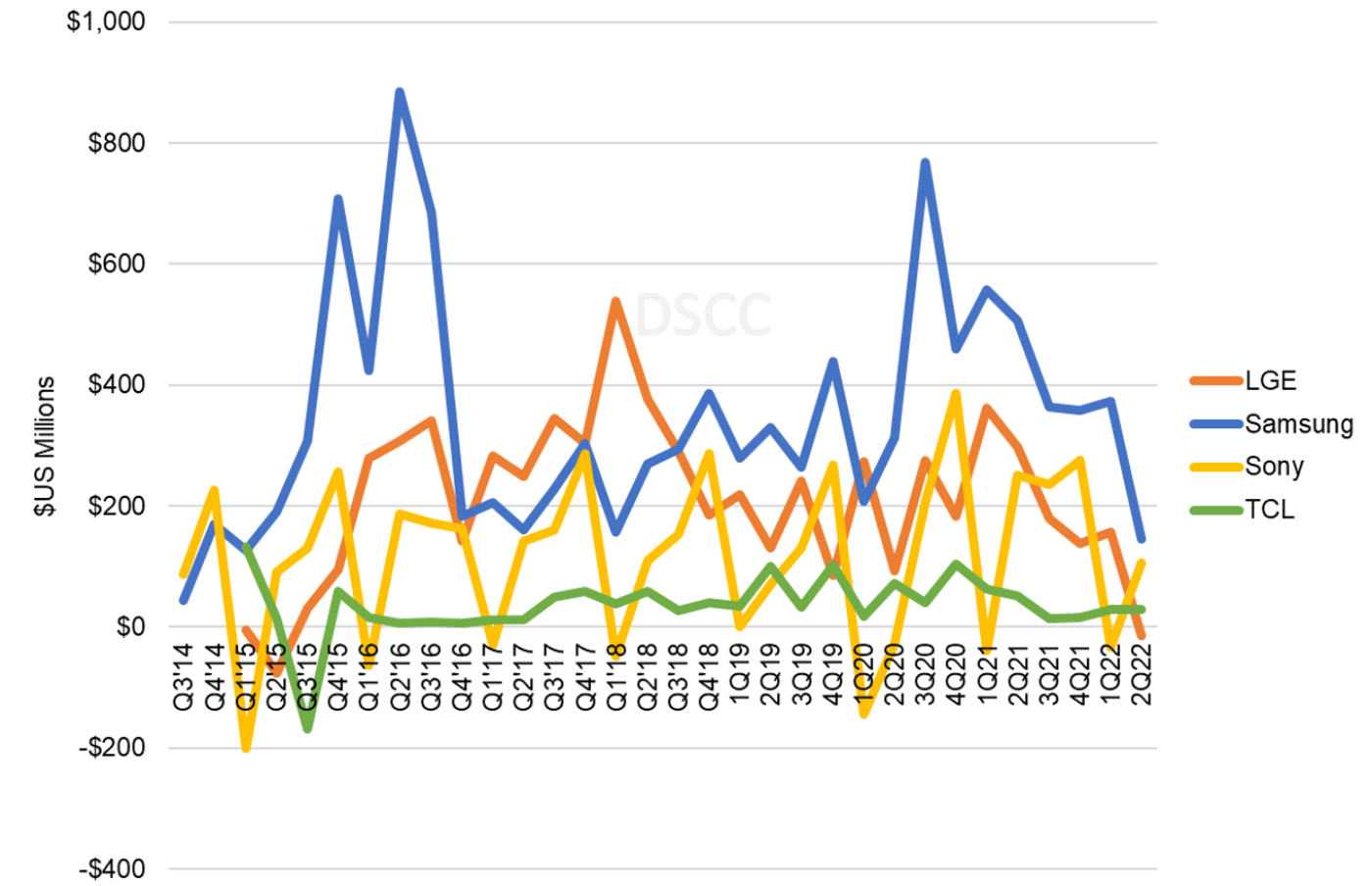グローバルTVブランドの財務業績比較~TCL、2022年上半期はTV低迷で減益
冒頭部和訳
TCL Electronicsが先週、2022年中間期業績を発表した。上半期については、収益がわずかに減少し、純利益は大幅に減少したことを報告している。世界のTV市場の低迷により、同社のTV事業収益は2桁減となった。TCLはTVを中心とした委託製造業からグローバル家電ブランドへの進化を続けているが、同社の主要収益源は依然としてTVである。
TV Slowdown Hits TCL Profits in 1H’22 and Brand Comparison
TCL Electronics issued its 2022 Interim Report last week covering the first half of the year, reporting a sharp decrease in net profits on a modest decrease in revenues. The slowdown in the global TV market led to a double-digit decrease in revenues from its TV business. TCL continues to evolve from a TV-centric contract manufacturer to a global consumer electronics brand, but TVs remain the dominant source of revenues.
The larger TCL group is a complex web of companies, and DSCC Weekly Review readers recognize TCL Technologies as the flat panel display maker which owns CSOT. TCL Electronics represents the consumer side of the business, including TVs but also smartphones, tablets and other consumer electronics devices. While TCL Technology is traded in China on the Shenzhen exchange, TCL Electronics is traded in Hong Kong and reports results in HK dollars. For this article, we will refer to TCL Electronics as simply “TCL”.
TCL reported net profit from continuing operations of HK$254M (US$38M) on revenues of HK$33.7B ($4.3B) for the first six months of 2022. Revenues decreased 4% Y/Y and net profits from continuing operations fell by 73%.
During 2020, TCL divested its Original Design Manufacture (ODM) TV business and acquired the smartphone business of TCL Communications, and revenues from the smartphone business were included from September 2020, so Y/Y comparisons are applicable.
While TV continues to be the dominant source of TCL revenue, the acquisition of the smartphone business reduced the portion of revenue from TV from 93% in 2019 to 78% in 2020 and 66% in 2021 and 58% for the first half of 2022. TCL combines TV with smartphones and commercial displays in an umbrella Display division that represented 80% of revenues for 1H22, down from 84% in the prior year. TCL’s Innovative business segment includes smart connection and smart home businesses and All-Category Marketing business which includes appliances such as air conditioners, refrigerators and washing machines. Innovative business generated 16% of TCL revenues for the first half, up from 12% in the corresponding period of 2021, and TCL’s Internet business covered 2.8% of revenues, up from 2.1% a year ago.
TCL reported that its gross margin for TVs increased from 16.7% in 1H’21 to 18.7% in 1H’22, as margins improved worldwide, and the business mix shifted toward China. China’s gross margins increased from 20.4% in 1H’21 to 22.2% in 1H’22, while “overseas” (i.e., non-PRC) margins increased from 14.4% to 17.0%. TCL unit sales of TVs decreased by 10% to 10.2M, as a 1% increase in China sales was overwhelmed by a 13% decrease in unit sales overseas. Overall revenues decreased 15% to HK$19.7B ($2.5B) with a 2% revenue decline in China and a 15% revenue decline overseas.
TCL TV Sales 2019-2022
Although TCL highlighted a richer product mix, with average size increasing from 52.5” to 55.7” and the portion of 65”+ TVs increasing to 39%, it was not enough to offset price erosion and the company’s average selling price declined. TCL’s ASP in China decreased by 4% from $355 to $342 while its ASP in overseas business decreased by 9% from $240 to $219. TCL’s ASP for their worldwide business decreased by 6% from $264 to $248. As a comparison, Sony’s ASP for the first half of 2022 was $853, by far the highest among the global brands as Sony chooses not to compete in the mid-range and lower-end portions of the market.
Along with its business results, TCL highlighted its increased spending on research and development. R&D spending increased 4% Y/Y in 2021 to HK$1.07B ($137M) or 3.2% of revenues.
TCL’s outlook for the second half of 2022 was short on quantitative goals and long on strategic buzzwords. TCL described its strategy to “Adhere to the globalization, technicalization and pursue creation of sustainable growth value for consumers. TCL’s goal is “with smart connection of all-category products, to create and all-scenario smart life and be devoted to becoming the world’s leading company of smart devices.”
Comparison of Global TV Brands
With TCL results finalized, we can now compare the TV businesses of the four major global TV brands. Although TCL revenues declined in the first half, revenues for Sony declined more sharply, and TCL again passed Sony in revenues to take the #3 spot in the TV market, pushing Sony to #4. For the first half of 2022 among the top four brands only Samsung managed to increase revenues compared to 2021, with a 3% increase Y/Y based on a strong Q1. LG revenues decreased by 15% Y/Y in the first half, while TCL revenues decreased by 16% and Sony revenues decreased by 28%.
Revenues for Global TV Brands, 2014-2021
Although TCL’s profitability was affected by the market downturn, it fared better than its competitors, as shown in the next chart. TCL’s recorded a 2.4% operating profit margin for the first half of 2022, compared to 3.8% in the prior year period. The downturn was much worse for Samsung as operating profits dropped 71% Y/Y in Q2, and LG’s TV business fell to an operating loss in the second quarter.
Operating Profits for Global TV Brands, 2014-2022
TCL’s 2022 Interim Report shows progress in its quest to become a global CE brand, but also the challenges of managing a downturn in the market profitably. TCL’s TV business will benefit from low LCD panel prices and may be helped by an improvement in the China TV market in 2022, if it happens.



